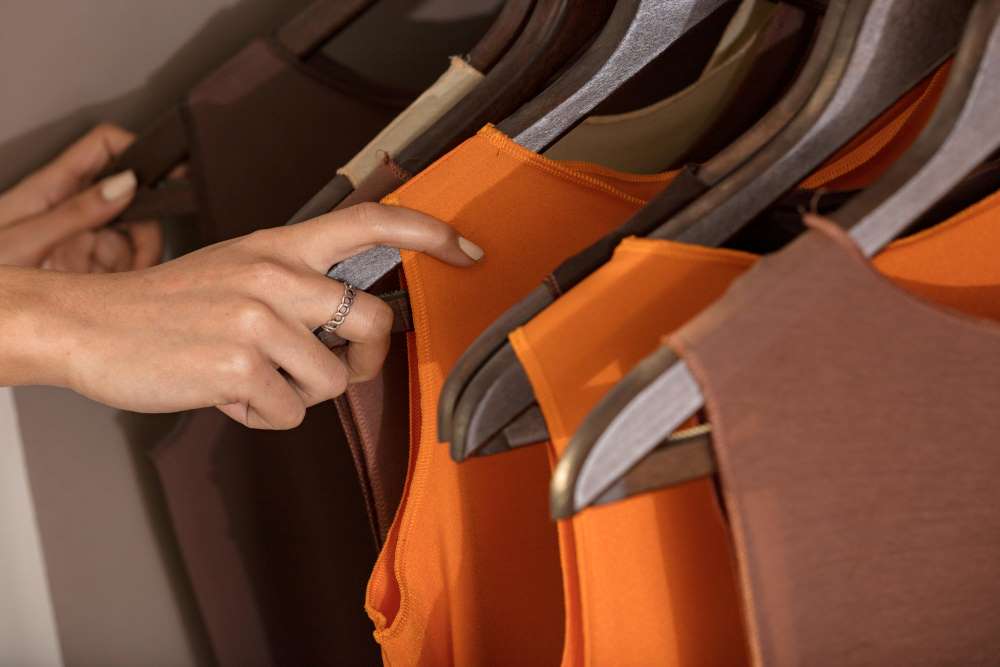
If you're a woman, then you know that choosing the perfect undergarments can be crucial to how your outfit performs on any given occasion. Your confidence and comfort are dependent on it. But have you ever considered how important the type of fabric your intimate wear should be made from?
The right choice will make all the difference between an okay fitting to one where everything feels more natural and comfortable throughout each moment - even until bedtime! In this article, we'll explore what traits matter in finding which material truly works with each need and highlight different available fabric choices.
Factors to Consider When Selecting Undergarment Fabric
Selecting just the right type of fabric when shopping for undergarments can make all the difference in staying comfortable throughout long or physically demanding days. There are multiple elements to consider here--chiefly. If you're looking for undergarments that combine these essential features, check out organic women's cotton underwear by Q for Quinn, it has the needed amount of comfort!
Comfort
Comfortable undergarments are vital since we wear them daily for extended periods. Choosing a soft fabric is paramount for optimal comfort levels; abrasive textures could lead to significant skin irritation and general unease throughout the day. In addition, continually feeling damp and hot down there could raise concerns. Stay cool by wearing undergarments and camisoles for girls from Yellowberry with breathable choices in material for smooth sailing throughout long hours at work or playtime activities.
Durability
If you don't prioritize the longevity of your undergarments when selecting them, chances are you'll find yourself purchasing replacements quite often. It's a well-known fact that underwear is subjected to significant wear and tear over time; hence choosing durable fabrics that maintain their form and color even after multiple wash cycles will ensure extended comfort has a high importance.
Health Concerns
Comfort is the top-most priority, along with sustainability measures implemented by finding environmentally friendly options available today. However, beyond these general appeals lie other more pressing matters like avoiding allergic reactions for those who have known sensitivities upon wearing certain clothing items. Organic cotton or bamboo has proven healthy substitutes for addressing these minor setbacks since they offer a more delicate surface layer guaranteeing comfortable wearability.
Hygiene is not just about personal care; it also includes the type of clothes we wear. Choosing the wrong fabric, like polyester or nylon, could promote bacterial growth leading to infections or unpleasant odor.
Fabric technology has come to our aid by inventing moisture-wicking and breathable ones that curtail bacterial activity-keeping us refreshed all day long.
Best Fabric Options for Undergarments
Selecting appropriate fabric options can significantly enhance your underwear performance and keep you comfortable throughout the day. But which materials are the best?
Cotton
Cotton is a classic choice for undergarments, and good reason. It's soft, breathable, and moisture-wicking, making it a comfortable choice for all-day wear.
Pros
-
Durable
-
Easy to care for
-
Natural and hypoallergenic fabric (less likely to cause allergies or sensitivities)
Cons
-
Not as stretchy as other fabrics
-
Can shrink in the wash
Modal
Modal is a newer fabric on the undergarment scene, but it's quickly gaining popularity. Made from beech tree pulp, modal is soft, breathable, and moisture-wicking.
Pros
-
Stretchy (offers support)
-
Durable and resistant to pilling
Cons
-
Expensive than some other fabric options.
Microfiber
Microfiber is another popular choice for undergarments. It's soft, lightweight, and breathable, making it a comfortable option for all-day wear.
Pros
-
Stretchy
-
Durable
-
Easy to care for.
Cons
-
It may cause irritation or allergic reactions.
Silk
Silk is a luxurious fabric many women love for its softness and breathability. It's also hypoallergenic, making it an excellent choice for women with allergies or sensitivities.
Pros
-
Temperature-regulating
-
Durable and resistant to pilling
Cons
-
Expensive
-
Very delicate and requires special care
-
Not a low-maintenance option.
Lace
Lace is a beautiful and feminine fabric often used in lingerie and other intimate apparel. It's soft and delicate, making it a comfortable option for all-day wear.
Pros
-
Breathable
-
Moisture-wicking
Cons
-
Not as durable
-
Prone to tearing or snagging
-
It may cause allergies or sensitivities.
Bamboo
Bamboo is a newer fabric option quickly gaining popularity in the undergarment world. It's soft and breathable, making it a comfortable choice for all-day wear as it can prevent odor and bacterial growth.
Pros
-
Moisture-wicking
-
Antimicrobial
Cons
-
Not as durable as other fabric options
-
More expensive than some other fabrics
Conclusion
Undergarment fabrics such as cotton, microfiber, bamboo, lace, or silk have varying properties that impact their benefits and desirability for individual needs. For example, microfiber has exceptional moisture-wicking capabilities; bamboo offers antibacterial and hypoallergenic advantages, whereas lace adds depth to any wardrobe with femininity flair; silk provides transformative effects in confidence-boosting pieces. Each of these fabrics has unique properties and benefits, so choosing the one that best meets your needs and preferences is important.



























